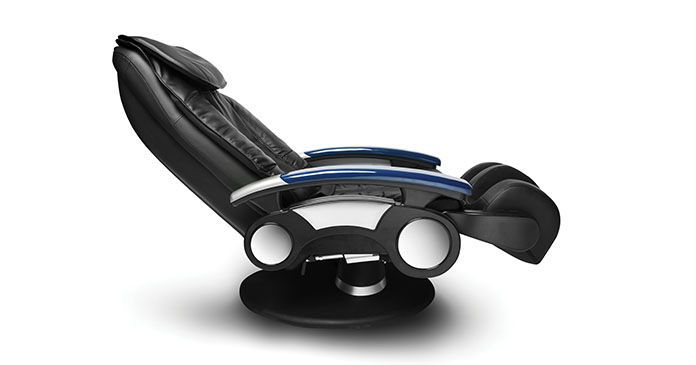Job No. 1 for CEOs today is ensuring the company delivers a compelling customer experience. This laser sharp focus on the total experience must span the entire demand and supply chain and incorporate every aspect of how products and services are designed, priced, marketed, sold, delivered and supported. However, delivering compelling experiences requires that leaders avoid common mistakes.
Quality is Job 1
In 1981, Ford started running an ad campaign that asserted “Quality is Job 1.” Automakers weren’t alone in prioritizing quality back when dead batteries, overheated engines, flat tires, and broken turn signals were all frequent car problems. This was also an era when television reception was fickle, food was quick to spoil, and banks miscounted money. Over the last 40 years, most major quality problems have vanished due to fanatical measurement coupled with advancements in design, business processes, science and technology.
Now customers expect even more. For example, my first car seat only moved forward or back using a manual lever. In contrast, today my car has 18-way power, massaging seats with lumbar support that can be heated or cooled. Unfortunately, my car seat doesn’t know how to sense my actual comfort and automatically reposition itself to make me happier while I’m on the open road. I now ask myself a question that would have been unimaginable in my youth: “Why isn’t my car seat getting smarter each time I drive my car?”
Full-service to self-service digital
With excellent quality now more or less a given, companies have shifted their energy to improving every aspect of the customer experience. To distinguish themselves in this environment, the best companies are on a quest to put intuitive, self-service, digital experiences at the center of their customer interactions.
The financial sector was an early adopter when it started replacing tellers with ATMs. Customers these days rarely need tellers, bankers, brokers or service agents to handle transactions or inquiries; most everything can be conveniently and accurately handled on some screen. Talking to a financial services employee might soon become a “once in a decade” occasion for an average customer.
It’s not just financial services. We see this front-line transformation happening everywhere. Cashiers are disappearing from grocery stores while pharmacies use apps to manage Rx refills. It has probably been years since you stopped to check out of your hotel.
However, the new world of customer experience also makes new demands on customers. If not managed skillfully, these demands can drive away large segments of your customer base.
Long before customers arrive at the self-checkout aisle they have been overwhelmed with mind-boggling choice. Amazon offers more than 600 million products on their website. A typical Walmart has 150,000 products in a supercenter and 70 million more online. Typical smartphones now have several hundred features—and access to more than a million apps.
Without meaningful guidance, a world of abundance can lead to paralysis for customers forced to make their way alone through the thicket. Even worse, our self-service world assumes customers can independently follow instructions and complete tasks—despite huge variations in intellect, education, health and wealth. The future will demand even more customer self-sufficiency in an environment of greater complexity. A glitchy app, devices that turn out to not be so intuitive, or long queues for help can devastate your customer service strategy. Companies must work overtime to ensure no customer gets left behind.
Entangled brands
Our global ecosystem requires leadership teams to constantly rethink how they can improve their experience in the context of every other experience that might impact their customers. Like it or not, you need to understand how adjacent products and services work with your offerings, or your customer will end up in the dreaded Catch 22 in which the hardware maker blames the software maker—and vice versa.
Consider Jessica, who is flying from NYC to San Francisco for a business trip. She takes an Uber from Brooklyn to JFK airport. Arriving at the Delta Air Lines terminal, Jessica zips through security using her TSA Precheck status and grabs a coffee at Starbucks.
She is thrilled to be upgraded to First Class, but that joy fades once Jessica can’t connect her Apple MacBook to the GoGo inflight WiFi using her T-Mobile account. Meanwhile, her fancy Bose noise-cancelling headphones can’t tune out a screaming baby.
Her plane lands, and she takes a Lyft to the Westin, but gets stuck in traffic. Her frustration escalates when the check-in kiosk doesn’t recognize her reservation. She often stays at Hilton hotels and has no Westin status, so she stands in the “non-elite” line to get her keycard.
While standing on that line, Delta pushes Jessica a survey asking for feedback about today’s trip. “What is her willingness to recommend Delta on a 1 to 10 scale?” Where should she begin her story? Her journey is the byproduct of entangled brands and external forces. This influences her mood, reviews, and rants at any moment—and she is just one of several million travelers that had their own unique expedition that day.
Avoiding common mistakes
During the peak of the quality movement, the big problems were obvious (e.g., several million cars with overheated engines each year), while solutions were universally applicable. In contrast, today’s enterprises aspire to align the individual experience to a customer’s exact needs. That’s a big ambition, one that requires continuous improvement in multiple dimensions. Success in this environment means swerving around several common mistakes and pitfalls.
Leaving average customers behind in favor of indulging the most loyal, profitable customers.
Which customer is more likely to define your company’s brand image this year? Is it the highly profitable “platinum” customer who has no complaints because they get expedited concierge care—or is it the average customer, who remains on hold for 45 minutes to reach a call center agent who fails to resolve an urgent problem?
In today’s world, your company’s reputation is only as good as the experience delivered to your average customers—because they are your biggest population and hold the social media megaphone.
When your average customers are unhappy, they post that news on Facebook, Twitter, Yelp, and a host of specialty forums. Instead of leaving average customers behind, maybe it is time to reset the bar. The winning formula now is ensuring the average customer is completely satisfied while highly profitable customers are ecstatic. How do we make this happen? Let’s turn to the next topic: business model transformation.
Neglecting fundamental business model transformation to reinvent the customer experience.
The famous pivot Netflix made from shipping DVDs to offering thousands of videos via streaming is a classic example of business model transformation dramatically improving the average customer experience. While this transformation involved capitalizing on new technology, the point of departure was rethinking the business model.
This line of inquiry may be more important than ever. Why? In a world with more than 300 million businesses that are seeking new sources of growth, industry lines inevitably keep blurring. At any given moment, a new array of non-traditional competitors is already casting an eye on your customers. The “payments experience” is a prime case extending across the global financial services, technology and telecommunications, and social media sectors (e.g., using Apple Pay or Venmo on your Apple iPhone powered by AT&T and linked to your American Express card to pay for a meal at a McDonald’s restaurant).
Based on my work with CEOs and chief strategy officers, every leadership team is exploring how best to shape the customer experience using insights drawn from massive amounts of data—leveraging analytics, algorithms, machine learning and artificial intelligence systems.
All these capabilities will be part of the solution, but successful companies aren’t starting their strategic debates focused on new tools and techniques. Instead, they are challenging their most fundamental strategic assumptions, and are willing to consider business model transformation as often as necessary. Not being bound to what worked in the past is a prerequisite for unlocking new innovations that can make a step change improvement in the average customer experience.
Failing to predict how customers perceived an experience before intervening or requesting feedback.
Imagine you are fast asleep at 1:30 am in a hotel room. Your hotel “neighbor” blasts loud music that startles you awake. As a frequent traveler who is now half asleep, your first instinct is to wait a few minutes and hope they turn the music off. Eventually, you lose patience and call security. After another 20 minutes and a few loud knocks on their door, the music finally stops, and you go back to sleep.
The next day you receive a survey from the hotel asking you about your experience. You ask yourself, “Why don’t they already realize I had a horrible experience last night, and why isn’t this reflected in their outreach?” You take a few more steps, pause, and also then ask yourself, “Why don’t they have sensors and cameras in every hall to detect loud noises and dispatch security automatically to check out what’s happening, long before I have to complain?” More intelligent tools and technology will eventually address all this missed opportunity, but the winning companies will be those that get to this future faster. Much faster.
Under-valuing great horizontal leaders who rally colleagues to improve the total customer experience.
Delivering the end-to-end customer experience requires precision cross-enterprise integration. Yet, too often organizations shine the brightest spotlight on vertical leadership success, which is all about a CXO leading a silo of executives, managers and associates to deliver measurable goals that are escalated each year.
In parallel, these same organizations often fail to applaud the naturally gifted horizontal leaders who work across silos and engage peers to renovate the customer experience. This may be harder to measure in practice—although we all recognize the behavior when we see it. The strategic question is whether the organization is devoting enough time to teaching and rewarding horizontal leadership that strives to ensure no key component of the customer experience is dropped during handoffs between divisions and departments.
Failing to connect boardroom conversations to customer experience evolution.
While many corporations aspire to be “customer-centric,” boardroom discussions are frequently disconnected from the customer experience. They might include reviewing M&A deals, new government regulations, rising health care costs, succession planning, and other matters without a single mention of the word “customer.”
This is a missed opportunity. Ideally, each board meeting should allocate some time to reviewing what steps are being taken to make customer experiences more compelling—because that is a clear path to prosperity and should leverage the board’s expertise. If you’re a board member and you notice that the agenda includes everything except customers, you might suggest a shift. Your fellow board members will appreciate the intervention.
Where are we on this grand voyage to radically improve customer experiences and rewire organizations to avoid common mistakes? If we step back and consider the complexity that leaders must navigate, we might be standing in a spot that is analogous to where we stood as a society with respect to the quality movement in 1985, the mobile phone in 1995, or cloud computing circa 2005.
We are still in the early innings of proactively shaping the individual’s entire customer experience journey in tune with their changing needs. That means we can all look forward to decades of innovation. It’s a moment of tremendous opportunity for leaders who are willing to fundamentally reinvent how companies connect with their customers.
Author Mark Leiter, chairman of Leiter & Company, is author of Crafting Strategy in an Accelerating World.














